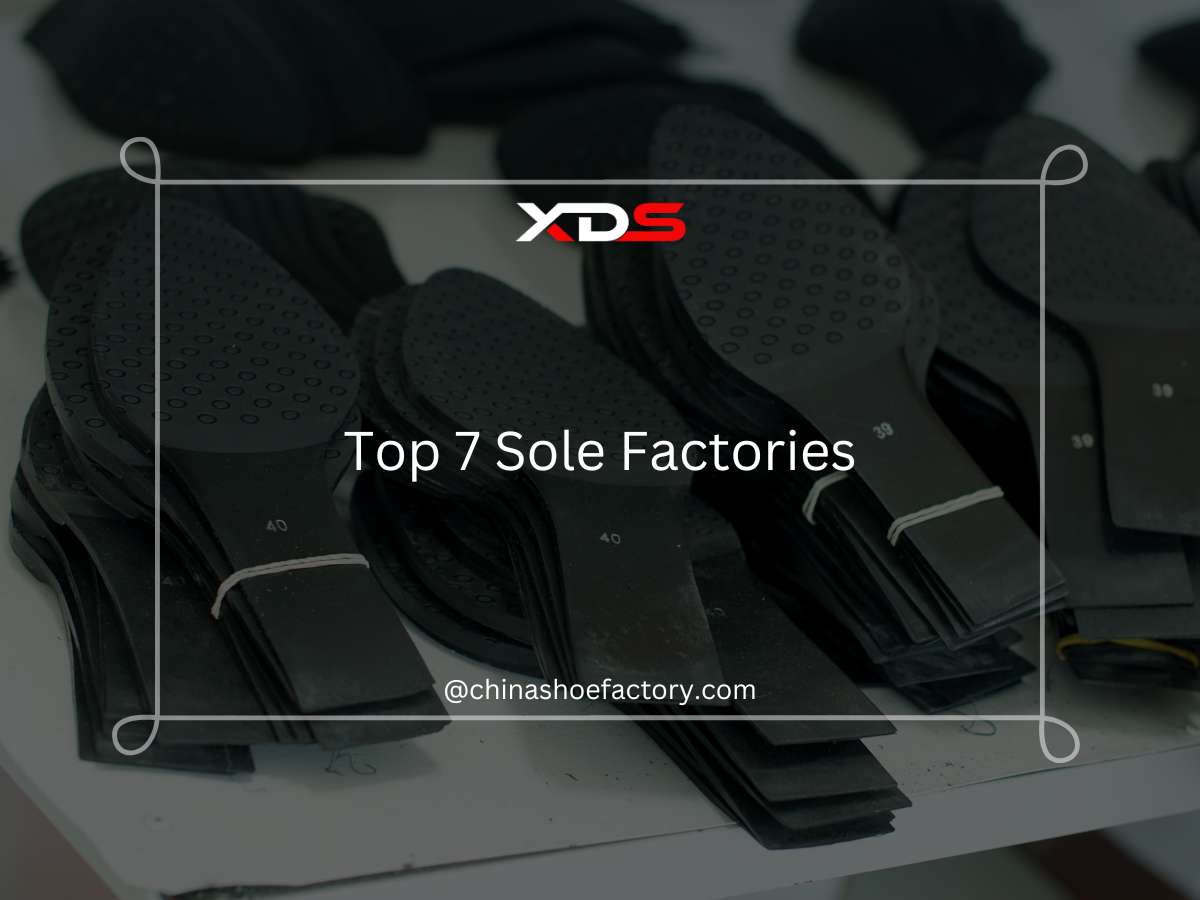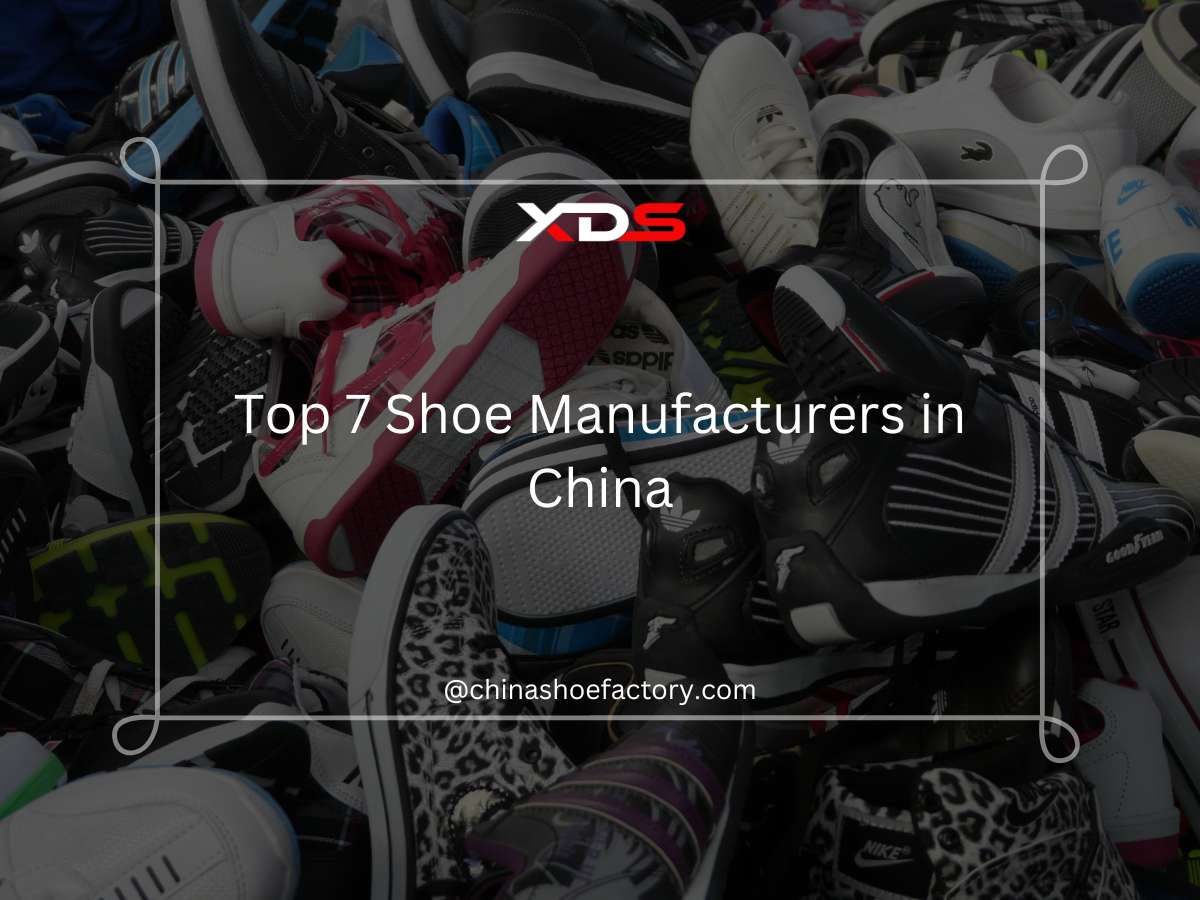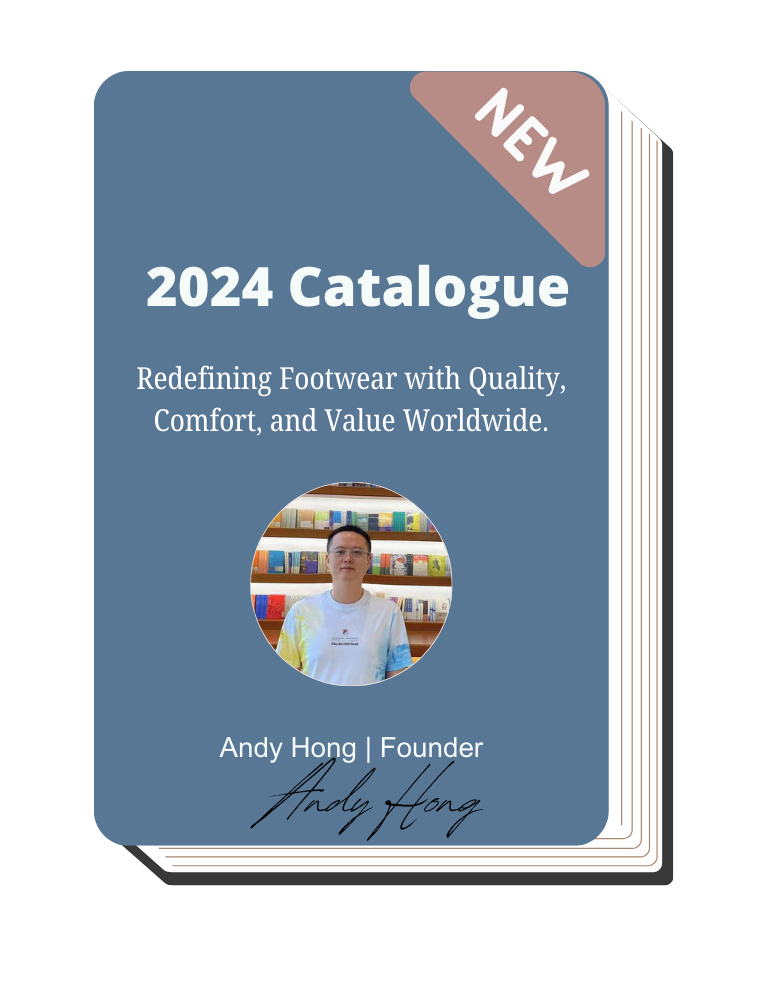Where Is Nike Manufactured?

Author: Andy Hong | Founder at XDS
Hi, I'm Andy Hong, here to share my expertise in footwear manufacturing with you.
Where Is Nike Manufactured?
Table of Contents
Where is Nike manufactured? Despite Nike being one of the most recognized names in footwear and apparel, many people don’t know much about where its products are actually made.
To uncover the details, I’ve gathered information about Nike’s manufacturing network across the globe. By exploring key data and reliable sources, I aim to provide a clear and comprehensive answer.
After thorough research and analysis, I found that Nike’s products are manufactured in multiple countries, primarily in Asia, with Vietnam, China, and Indonesia playing significant roles in its production network.
In this guide, we’ll explore Nike’s manufacturing footprint, including the major countries involved and technology used. You’ll also learn about challenges Nike faces in manufacturing and its plans for the future.
So let’s get down to it!
1. Nike’s Global Manufacturing Footprint
Nike’s manufacturing operations are vast, spanning across continents to meet global demand. With a focus on efficiency, sustainability, and innovation, Nike’s network supports its mission to deliver high-quality products. Below are the key highlights of Nike’s global manufacturing footprint, detailing how and where their products are made:
- Global Presence in 40 Countries: Nike operates manufacturing facilities in over 40 countries, strategically chosen to balance cost, efficiency, and proximity to key markets. This widespread approach allows them to cater to diverse customer needs.
- Production in Asia: A significant portion of Nike’s production happens in Asia, with countries like Vietnam, China, and Indonesia leading the way. These regions are favored by their skilled workforce and advanced manufacturing infrastructure.
- Contract with other Manufacturers: Nike collaborates with independent contractors rather than owning factories directly. This flexible model helps them adapt quickly to changing market demands and expand into new regions when needed.
- Compliance and Ethical Standards: Factories working with Nike adhere to strict labor, safety, and environmental standards to maintain high operational integrity. At XDS, we uphold these standards through regular audits and training programs, prioritizing workers’ well-being and compliance across all operations while delivering comparable quality through their production processes.
- Product Range: Nike’s manufacturing facilities produce a wide range of products, from footwear to apparel and equipment. Each facility specializes in specific product categories, ensuring expertise and quality.
- Flexible MOQs: Factories working with Nike focus on flexible MOQs to support various customer requirements. Manufacturers like XDS are particularly friendly to new brands, offering options for small batches, such as orders as low as 500 pairs per colorway. This adaptability helps emerging businesses access high-quality manufacturing without the need for large-scale production.
- Future-Focused Growth: Nike continuously evaluates and expands its manufacturing footprint to support long-term growth. This involves entering new regions, adopting cutting-edge practices, and strengthening its partnerships with contractors.
2. Major Countries Where Nike is Manufactured
Nike’s products are made in various countries, each contributing uniquely to its global production strategy. From large-scale footwear manufacturing to innovative custom orders, these countries play a critical role in supporting Nike’s operations. Here are the key countries involved in Nike’s manufacturing and their contributions:
| Country | Year Started | Role | Key Strengths |
| Vietnam | 1995 | Largest footwear producer for global markets. | Skilled workforce, cost-effective production. |
| China | 1981 | Produces footwear, apparel, and equipment; innovation hub. | Advanced infrastructure, raw material access. |
| Indonesia | 1988 | High-volume footwear production for regional demand. | Low costs, proximity to major markets. |
| Thailand | 1984 | Mid-scale production of apparel and specialized items. | Expertise in niche products, stable base. |
| India | 2004 | Emerging hub for labor-intensive manufacturing. | Competitive costs, growing expertise. |
| Mexico | 1985 | Regional production and specialty orders. | Closer to markets, fast logistics. |
| United States | 1964 | Custom orders, prototypes, and innovation. | High-tech facilities, proximity to HQ. |
3. Technological Innovations in Nike’s Manufacturing
Nike has consistently invested in advanced technologies to streamline its manufacturing processes and improve product quality. These innovations reduce waste, save time, and enhance sustainability across their production lines. Let’s explore the major technological advancements shaping Nike’s manufacturing today:
Flyknit Technology
Flyknit technology uses advanced knitting machines to create lightweight, seamless shoe uppers. For example, this process drastically reduces material waste compared to traditional cut-and-sew methods. By combining comfort and durability, Flyknit has redefined how Nike manufactures performance footwear.
3D Printing for Prototypes
3D printing allows Nike to create prototypes quickly and efficiently without traditional mold-making delays. This enables faster adjustments to designs, reducing the time needed for product development. As a result, Nike can innovate and bring new products to market faster than ever.
Automated Cutting Machines
Nike employs automated cutting machines to precisely shape materials for its footwear and apparel. These machines reduce errors and material waste, leading to more efficient production. They also improve speed, making large-scale manufacturing faster and more consistent.
Digital Twin Technology
Digital twin technology helps Nike simulate its manufacturing processes in a virtual environment. This allows the company to identify potential inefficiencies and optimize workflows without disrupting real-world operations. It enhances planning and ensures smooth scaling of production.
Laser-Cutting Technology
Laser-cutting tools are used to add intricate designs to Nike’s products with exceptional precision. This technology enables faster production of detailed items while reducing manual labor. It also supports greater customization options for high-performance and lifestyle products.
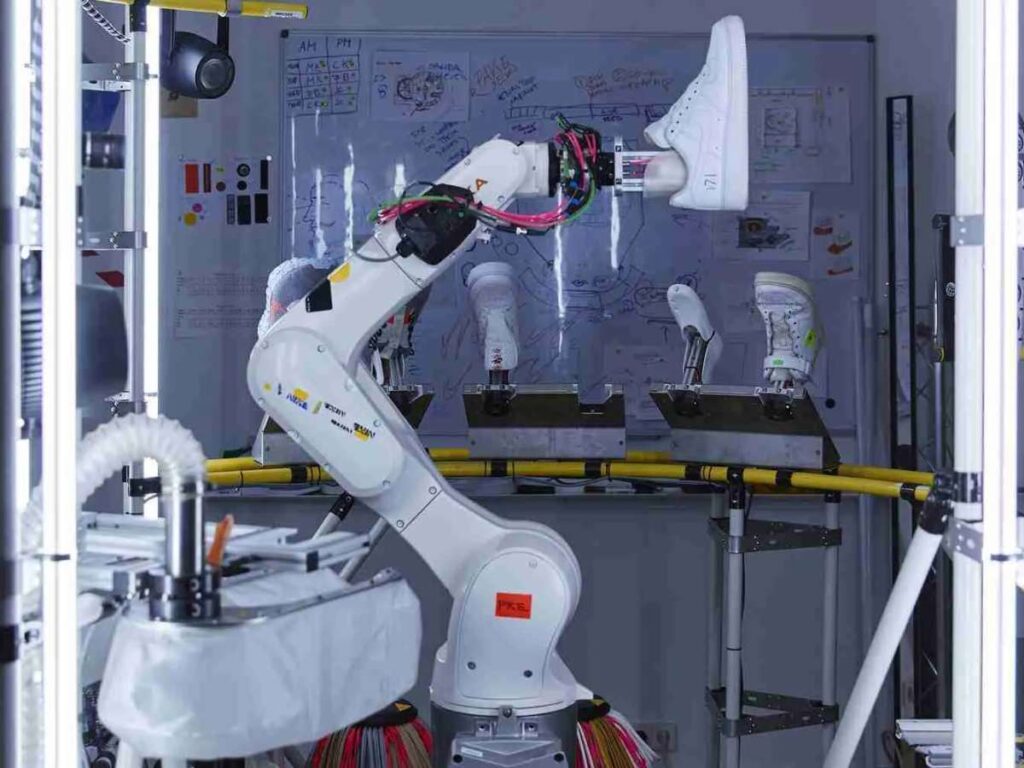
4. Challenges Facing Nike’s Manufacturing Operations
Managing a global manufacturing network comes with its share of obstacles. From addressing operational inefficiencies to navigating market demands, Nike encounters various challenges in maintaining smooth operations. Let’s examine the major issues impacting Nike’s manufacturing processes:
Rising Labor Costs
Labor costs are increasing in key production regions like China and Vietnam, which impacts overall manufacturing expenses. This trend forces Nike to explore alternative production hubs or adopt technologies to reduce dependency on labor. For example, automation and robotics are being considered to help balance affordability while maintaining quality, which remains a pressing challenge.
Lack of Expertise
Some regions lack the technical skills and expertise required to adopt advanced manufacturing technologies. This creates delays in implementing innovations like automation or sustainability-focused systems. Nike must invest in training programs and infrastructure to bridge this gap and optimize global operations.
Non-Compliance
Non-compliance with labor and safety standards is a significant challenge in Nike’s manufacturing operations. Ensuring contractors meet legal and ethical guidelines requires regular audits and substantial oversight. Failing to address violations can harm Nike’s reputation and disrupt operations.
Pandemics and Geopolitical Tensions
Global pandemics and geopolitical conflicts have created significant disruptions in Nike’s supply chain. These events cause delays in transporting raw materials and finished goods, leading to production bottlenecks. Nike must continuously adapt its operations to manage these unpredictable external factors.
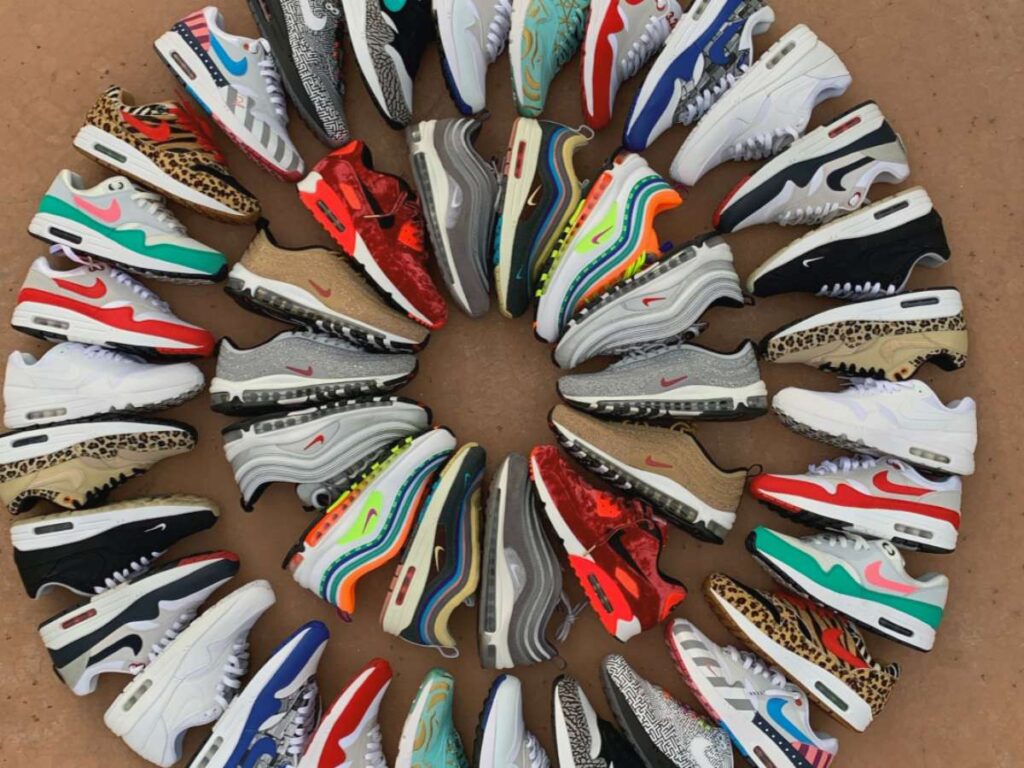
5. Future of Nike’s Manufacturing Strategy
Nike’s manufacturing strategy is evolving to meet the demands of a dynamic global market. The focus is on innovation, sustainability, and regional adaptation to improve efficiency and meet customer expectations. Let’s uncover the key areas driving the future of Nike’s manufacturing strategy:
Robotics and AI
Nike is expanding its use of robotics and AI to handle repetitive tasks such as assembly and material handling. This will allow factories to increase output while reducing the reliance on human labor for routine tasks. Future plans include integrating smarter robots that can adapt to changing production requirements.
Plant-Based Materials
Nike plans to expand its research into plant-based materials, focusing on high-performance alternatives like bio-synthetics and organic fibers. These materials will be integrated into more product lines to support sustainable innovation. Future goals include developing materials with lower energy requirements during production.
Renewable Energy Sources
Nike is transitioning its factories to renewable energy sources such as solar and wind. By focusing on global adoption, the company aims to reduce its carbon footprint across its entire production network. Future plans include collaborating with energy providers for consistent access to clean power.
Solar Panels
Nike plans to install solar panels across its manufacturing facilities globally. This will reduce the company’s reliance on fossil fuels and contribute to its long-term sustainability goals. By scaling solar energy, Nike aims to lower operating costs and greenhouse gas emissions.
Conclusion
Finding where Nike manufactures its products is a question that sparks curiosity for many. Understanding their global production strategy can provide valuable lessons for brands looking to improve their own supply chains. Flexible and efficient manufacturing is key to meeting diverse customer demands.
We hope this guide has provided a clear understanding of Nike’s production network. If you’re looking for a manufacturer for your brand that offers flexible options without high MOQ requirements, consider XDS. We offer a minimum order of 500 pairs for select styles and provide a 180-day quality guarantee. Contact us today to learn how we can help bring your ideas to life.
Learn More: Recommended Reads
Curious for more? These additional articles offer even more insights and advice:
Still haven’t found what you’re looking for? Don’t hesitate to contact us; we’re available around the clock to assist you.
Quick Quote
Fill out the form, get the quote in hours!

